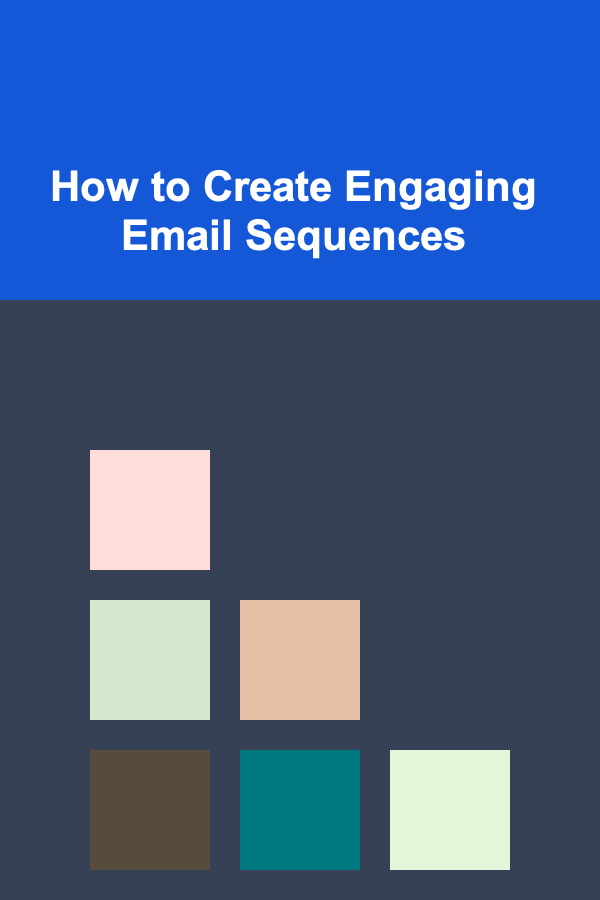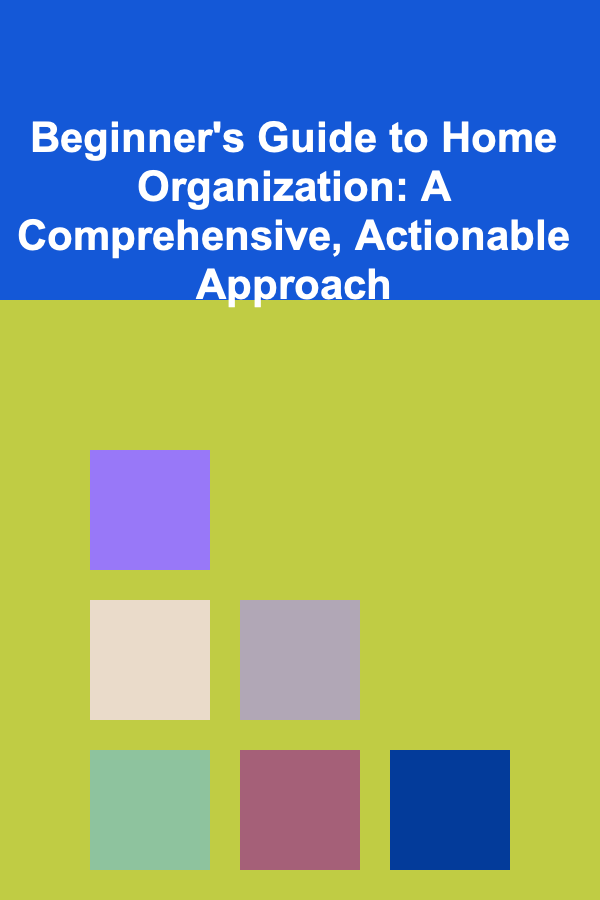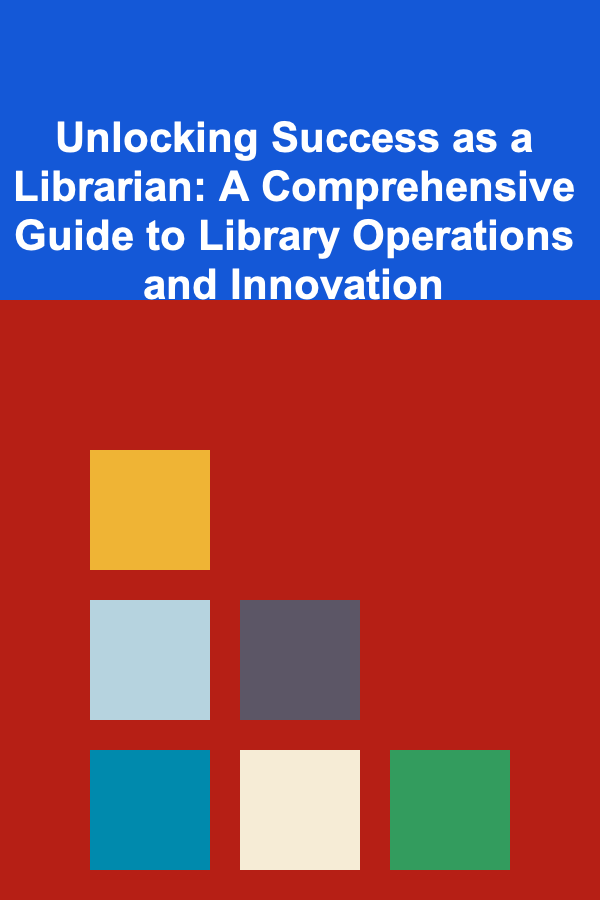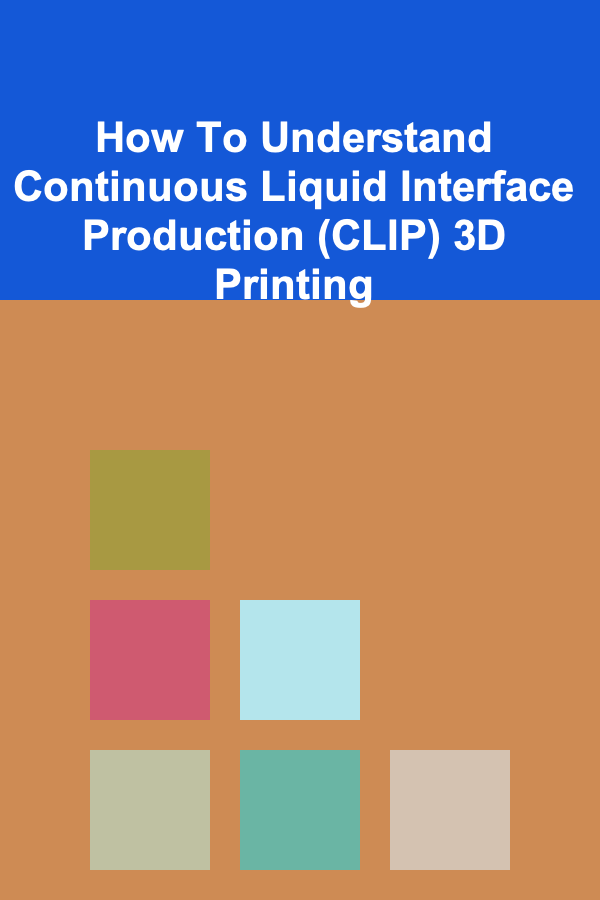
How to Create Engaging Email Sequences
ebook include PDF & Audio bundle (Micro Guide)
$12.99$7.99
Limited Time Offer! Order within the next:

In the digital age, email marketing remains a powerful tool for businesses of all sizes. However, simply sending out mass emails is no longer effective. To truly connect with your audience and drive results, you need to create engaging email sequences. These sequences, a series of automated emails triggered by specific actions or time intervals, can nurture leads, onboard new customers, promote products, and much more. This comprehensive guide will delve into the art of crafting effective email sequences that capture attention, build relationships, and ultimately, achieve your business goals.
Understanding the Power of Email Sequences
Email sequences are more than just a collection of emails; they are a strategic approach to communication. Unlike standalone emails, sequences allow you to guide subscribers through a planned journey, delivering targeted messages at the right time. This personalized approach can significantly improve engagement and conversion rates.
Here's why email sequences are so effective:
- Automation: Once set up, sequences run automatically, saving you time and effort.
- Personalization: You can tailor sequences based on subscriber behavior, demographics, and interests.
- Targeted Messaging: Each email in the sequence can focus on a specific topic or goal, ensuring relevance for the recipient.
- Relationship Building: Sequences allow you to nurture leads and build trust over time.
- Improved Conversions: By guiding subscribers through a defined path, you can increase the likelihood of them taking desired actions, such as making a purchase or signing up for a service.
Planning Your Email Sequence: Defining Goals and Audience
Before you start writing, it's crucial to define the purpose of your email sequence and understand your target audience. Ask yourself these questions:
1. What is the Main Goal of the Sequence?
What do you want to achieve with this sequence? Here are some common goals:
- Lead Nurturing: Convert leads into qualified prospects.
- Onboarding New Customers: Guide new users through your product or service.
- Promoting a Product or Service: Introduce a new offering and drive sales.
- Re-engaging Inactive Subscribers: Win back subscribers who haven't been active lately.
- Event Promotion: Announce and promote an upcoming event.
- Welcome Series: Introduce your brand to new subscribers.
Your goal will dictate the overall theme and content of your sequence. For example, a lead nurturing sequence will focus on providing valuable information and building trust, while a product promotion sequence will highlight the benefits and features of your offering.
2. Who is Your Target Audience?
Understanding your audience is essential for creating relevant and engaging content. Consider the following:
- Demographics: Age, gender, location, occupation, income level.
- Interests: What are their passions, hobbies, and values?
- Pain Points: What challenges are they facing?
- Goals: What are they trying to achieve?
- Prior Knowledge: What do they already know about your brand and industry?
The more you know about your audience, the better you can tailor your messages to their needs and interests. Use data from your email marketing platform, website analytics, and customer surveys to gain insights into your subscribers.
3. What is the Trigger for the Sequence?
What action will initiate the email sequence? Common triggers include:
- Subscription: When someone signs up for your email list.
- Download: When someone downloads a lead magnet.
- Website Visit: When someone visits a specific page on your website.
- Purchase: When someone makes a purchase.
- Abandon Cart: When someone abandons their shopping cart.
- Inactivity: When someone hasn't opened or clicked on your emails in a while.
The trigger should be relevant to the goal of the sequence and the needs of the recipient. For example, a welcome series is triggered by a subscription, while an abandoned cart sequence is triggered by someone leaving items in their cart without completing the purchase.
Crafting Compelling Email Content: Writing with Purpose and Personality
The content of your email sequence is the heart of your strategy. Each email should be well-written, engaging, and contribute to the overall goal of the sequence. Here are some tips for crafting compelling email content:
1. Write Captivating Subject Lines
Your subject line is the first (and sometimes only) impression you make on your subscribers. It needs to be attention-grabbing and encourage them to open the email. Here are some strategies for writing effective subject lines:
- Keep it Short and Sweet: Aim for 6-10 words.
- Create a Sense of Urgency: Use words like "Limited Time," "Ends Soon," or "Don't Miss Out."
- Ask a Question: Intrigue the reader and make them curious.
- Use Numbers: Numbers stand out in a crowded inbox. (e.g., "5 Ways to...")
- Personalize it: Use the subscriber's name or mention something relevant to their interests.
- Offer Value: Clearly communicate the benefit of opening the email.
- Avoid Spam Trigger Words: Words like "Free," "Discount," and "Guaranteed" can trigger spam filters.
A/B test different subject lines to see what resonates best with your audience.
2. Focus on Value and Relevance
Every email should provide value to the recipient. Don't just sell, educate, entertain, and inform. Address their pain points, offer solutions, and share helpful resources. Make sure your content is relevant to their interests and needs.
Consider these content ideas:
- Educational Content: Share blog posts, guides, and tutorials related to your industry.
- Case Studies: Show how your product or service has helped other customers.
- Customer Testimonials: Build trust and credibility by showcasing positive reviews.
- Behind-the-Scenes Content: Give subscribers a glimpse into your company culture.
- Exclusive Offers and Discounts: Reward subscribers for their loyalty.
- Ask for Feedback: Show that you value their opinion.
3. Write in a Conversational Tone
Avoid using corporate jargon or overly formal language. Write as if you're talking to a friend or colleague. Use a friendly and approachable tone that builds rapport with your subscribers. Let your brand personality shine through.
4. Keep it Concise and Scannable
People are busy, and they often skim emails. Use short paragraphs, bullet points, and headings to make your content easy to read and digest. Highlight key information and use visuals to break up the text.
5. Include a Clear Call to Action (CTA)
Every email should have a clear and specific call to action. What do you want the recipient to do after reading the email? Make it easy for them to take that action by including a prominent button or link. Use action-oriented language and create a sense of urgency.
Examples of effective CTAs:
- "Learn More"
- "Get Started Today"
- "Download Now"
- "Shop Now"
- "Register Here"
- "Claim Your Discount"
6. Segment Your Audience
Segmentation is the process of dividing your email list into smaller groups based on specific criteria. This allows you to send more targeted and relevant messages, which can significantly improve engagement and conversion rates.
Common segmentation criteria include:
- Demographics: Age, gender, location, etc.
- Interests: Topics they're interested in.
- Purchase History: Products they've purchased.
- Website Activity: Pages they've visited.
- Email Engagement: How often they open and click on your emails.
By segmenting your audience, you can tailor your email sequences to the specific needs and interests of each group. For example, you can send a different welcome series to new subscribers based on the products they're interested in.
Designing an Effective Email Sequence Flow
The sequence of your emails is just as important as the content itself. Each email should build upon the previous one and guide the recipient towards the desired action. Here's a general framework for designing an effective email sequence flow:
1. The Welcome Email (Immediate)
This is the first email your subscribers receive after signing up for your list. It's your opportunity to make a great first impression and set the tone for future communications.
What to include in your welcome email:
- Thank you: Express your gratitude for subscribing.
- Introduction: Introduce your brand and what you do.
- Value Proposition: Explain the benefits of being on your email list.
- Set Expectations: Tell them what kind of content they can expect to receive and how often.
- Deliver on Your Promise: If you offered a lead magnet, provide the download link.
- Call to Action: Encourage them to explore your website or follow you on social media.
Example Subject Line: Welcome to [Your Brand]! Here's Your Free [Lead Magnet]
2. The Value Email(s) (Day 2-3)
These emails focus on providing valuable content and building trust with your subscribers. Share helpful tips, resources, and insights related to your industry. Don't focus on selling; focus on educating and engaging.
What to include in your value emails:
- Educational Content: Share blog posts, guides, and tutorials.
- Case Studies: Show how your product or service has helped other customers.
- Answer Common Questions: Address frequently asked questions about your industry.
- Share Industry News: Keep subscribers informed about the latest developments.
Example Subject Line: 3 Common Mistakes to Avoid When [Relevant Topic]
3. The Story Email (Day 4-5)
This email is your opportunity to connect with your subscribers on a personal level and build a stronger relationship. Share your brand's story, your mission, and your values. Let them know why you do what you do.
What to include in your story email:
- Your Brand's Origin Story: How did your company get started?
- Your Mission and Values: What do you stand for?
- Your Team: Introduce the people behind your brand.
- Customer Success Stories: Share inspiring stories of how you've helped your customers.
Example Subject Line: The Story Behind [Your Brand]
4. The Offer Email(s) (Day 6-7)
Now that you've built trust and provided value, it's time to introduce your product or service. Highlight the benefits and features of your offering and explain how it can solve their problems. Offer a special discount or incentive to encourage them to purchase.
What to include in your offer emails:
- Introduce Your Product or Service: Explain what it is and how it works.
- Highlight the Benefits: Focus on how it can solve their problems and improve their lives.
- Provide Social Proof: Include customer testimonials and reviews.
- Offer a Special Discount or Incentive: Create a sense of urgency and encourage them to purchase.
- Include a Clear Call to Action: Make it easy for them to buy.
Example Subject Line: Exclusive Offer: Get [Discount] on [Product/Service]
5. The Follow-Up Email(s) (Day 8-10)
If subscribers haven't purchased after receiving your offer email, send a follow-up email to remind them of the benefits and address any potential objections. Offer additional support or answer any questions they may have.
What to include in your follow-up emails:
- Remind Them of the Offer: Reinforce the benefits and urgency.
- Address Common Objections: Answer frequently asked questions and alleviate concerns.
- Offer Additional Support: Provide links to your FAQs, contact information, or live chat.
- Include a Testimonial: Share a positive review to build trust.
Example Subject Line: Last Chance to Save [Discount] on [Product/Service]
This is just a general framework, and you can adjust the sequence and content of your emails based on your specific goals and audience. The key is to provide value, build relationships, and guide subscribers towards the desired action.
Optimizing Your Email Sequences for Maximum Impact
Creating an email sequence is just the first step. To truly maximize its effectiveness, you need to continuously monitor its performance and make adjustments based on the data.
1. Track Key Metrics
Pay attention to the following metrics to gauge the success of your email sequence:
- Open Rate: The percentage of subscribers who opened your email.
- Click-Through Rate (CTR): The percentage of subscribers who clicked on a link in your email.
- Conversion Rate: The percentage of subscribers who completed the desired action (e.g., making a purchase, signing up for a service).
- Unsubscribe Rate: The percentage of subscribers who unsubscribed from your email list.
- Bounce Rate: The percentage of emails that could not be delivered.
Analyze these metrics to identify areas for improvement. For example, if your open rate is low, you may need to improve your subject lines. If your CTR is low, you may need to make your calls to action more compelling.
2. A/B Test Different Elements
A/B testing is the process of comparing two versions of an email to see which performs better. Test different subject lines, content, calls to action, and designs to optimize your email sequence.
Here are some elements you can A/B test:
- Subject Lines: Try different wording, length, and personalization.
- Headings: Test different headlines to see which is more attention-grabbing.
- Content: Experiment with different writing styles and formats.
- Calls to Action: Try different wording, colors, and placement.
- Images: Test different images to see which resonates best with your audience.
- Send Times: Experiment with different send times to see when your audience is most engaged.
Test one element at a time to isolate the impact of each change. Use the results of your A/B tests to continuously improve your email sequence.
3. Monitor Deliverability
Ensure your emails are reaching your subscribers' inboxes. Monitor your sender reputation and take steps to improve your deliverability if necessary. Use a reputable email marketing platform and follow best practices for email marketing.
Tips for improving email deliverability:
- Use a Dedicated IP Address: This will help establish your sender reputation.
- Authenticate Your Email: Use SPF, DKIM, and DMARC to verify your email's authenticity.
- Avoid Spam Trigger Words: Words like "Free," "Discount," and "Guaranteed" can trigger spam filters.
- Clean Your Email List Regularly: Remove inactive subscribers and invalid email addresses.
- Ask Subscribers to Add You to Their Address Book: This will help ensure your emails reach their inbox.
4. Personalize and Segment
Reiterate the importance of personalization and segmentation. The more you tailor your emails to the specific needs and interests of your subscribers, the more engaged they will be.
5. Regularly Review and Update
Email marketing is a dynamic field. Best practices are constantly evolving, and your audience's needs and interests may change over time. Regularly review and update your email sequences to ensure they remain relevant and effective.
Conclusion: Mastering the Art of Email Sequences
Creating engaging email sequences is an ongoing process that requires careful planning, compelling content, and continuous optimization. By following the steps outlined in this guide, you can craft email sequences that capture attention, build relationships, and drive results. Remember to focus on providing value, personalizing your messages, and tracking your performance to maximize the impact of your email marketing efforts.
Email sequences are a powerful tool for any business looking to connect with its audience and achieve its marketing goals. Embrace the art of email sequences, and you'll be well on your way to building a loyal and engaged customer base.

Beginner's Guide to Home Organization: A Comprehensive, Actionable Approach
Read More
How to Conduct a Thorough Property Inspection Before Renting
Read More
How to Find Legitimate Online Typing Jobs for Beginners
Read More
Unlocking Success as a Librarian: A Comprehensive Guide to Library Operations and Innovation
Read More
Why You Should Reassess Your Storage Solutions Regularly
Read More
How To Understand Continuous Liquid Interface Production (CLIP) 3D Printing
Read MoreOther Products

Beginner's Guide to Home Organization: A Comprehensive, Actionable Approach
Read More
How to Conduct a Thorough Property Inspection Before Renting
Read More
How to Find Legitimate Online Typing Jobs for Beginners
Read More
Unlocking Success as a Librarian: A Comprehensive Guide to Library Operations and Innovation
Read More
Why You Should Reassess Your Storage Solutions Regularly
Read More